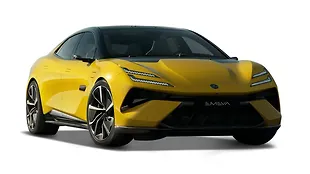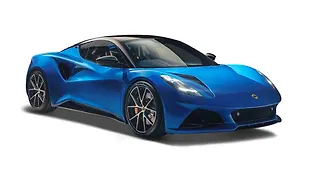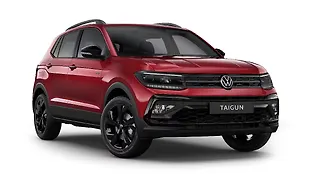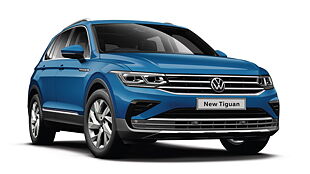Introduction
As is obvious from the statement in the headline, localisation is the mantra for India 2.0. Now India 2.0, for the uninitiated, is the operative term Volkswagen Group is using to set things right in India. As we are well aware for the size, the standing, and the success Volkswagen has had as a group the world over, its Indian operations, hitherto, has been a damp squib at best.

The group obviously intends to change that. And it will do it with cars built on the modified MQB platform. And as is clear from Director of Volkswagen India, Steffen Knapp’s statement – these cars will be heavily localised. But Steffen had more to share in this exclusive interview with CarWale.
The Aftersales

Apart from products that are highly localised, well-equipped, and designed to appeal to both the heart as well as the head, the new ‘India 2.0’ lineup would also need to be affordable. Affordable not only in terms of purchase price, but also affordable to run. And that change is already happening, says Steffen.
Knapp: We are doing a lot in this area. To begin with we are working towards lowering the total cost on ownership of Volkswagen cars. We realise it was one of the biggest reasons for prospect buyers to reject Volkswagen. So, we have already worked towards bringing the regular service cost down by 24 per cent to 44 per cent across carlines. We have also standardised the parts pricing. We have added four-year roadside assistance, four-year warranty, and the three free services.

But Steffen realises that cost is only part of it. Convenience, especially given the positioning of VW and its cars in India, is also something customers want and appreciate. And in that regard the brand has recently introduced what it calls Volkswagen Assist.
Knapp: It basically involves small repairs that can be carried out in your home instead of the customer having to go to the service centre. So if you want to do an oil change, it can be done at your home. They have all the tools and technical know-how. So, they just drive to your place and fix it there. We have also launched the Mobile Service Vans, which are bigger trucks that have the complete set of service equipment available. These are particularly handy if you are in a remote location because they can completely service the car at that location.
Furthermore, Volkswagen is now looking at the next step in the total cost of ownership initiative. And it intends reducing the cost of ownership further by middle of this calendar.
Knapp: With it, we will be very competitive on this (cost of ownership) front. All we need to do now, is talk more about it, and get the word out there because perceptions are always difficult to change. Even today only one per cent of the people who get VW’s serviced at our authorised centres come back for the same work. The rest 99 per cent have their cars fixed correctly the first time itself. So, our process, the way our people work, is all state of the art. But we need to make sure our customers understand that there’s value in what we do and that we are definitely competitive when it comes to pricing.
India 2.0

Knapp: India 2.0 is all about India. The priority was never to depend heavily on exports, but to grow our portion in the Indian market. And there’s only one solution in India – first get the right product, and second, heavy localisation. And we can’t be cruising around at 80 per cent localisation. We have to go up.
And up they have gone. The group is already at 93 per cent localisation for its new cars. And, of course, a major chunk of this localisation includes the drivetrain. The company will first localise the 1.0-litre TSI engine, as it will account for the majority of engines VW will sell in India. But, will VW only look at localising one engine? Not in the long run, for sure. But like Knapp said, this will be the first, as they can’t possibly bring everything at the same time. And since this one-litre TSI will account for the biggest chunk of the sales, it makes sense to start with it.
Knapp: And you know the Taigun (the first car to be launched under the India 2.0 initiative) will also be equipped with a 1.5-litre TSI engine, which will be the second step. As far as gearboxes go, we have already launched the six-speed manual on the Polo and the Vento, which we will start making here in India. The Polo now comes with an AT and not a DSG, so the plan currently isn’t to manufacture the DSG in India.
The T-Roc

But, sales for the ‘India 2.0’ cars only kick off in 2021. And though the Polo and the Vento continue to be available at dealerships, there is only so much these models can do to create excitement around the VW brand. What VW needs now are some models to make a splash with. Models that will create more buzz than outright sales.
Enter, the T-Roc. Launched at Rs 19.99 lakhs, the T-Roc is a pricey proposition. But, Steffen believes there is a market for it, nonetheless.
Knapp: It’s a classic Volkswagen. So, it’s safe, it has the highest quality standards, and it is definitely fun to drive. The owners or prospects will absolutely love the look of the vehicle. They will see it differently or as a unique proposition. It is also packed with technology. We have the digital cockpit, connectivity solutions, a panoramic sunroof, and there are paddle shifters for the DSG transmission. So, you have a lot of comfort and convenience in the vehicle. It is also spacious enough so that you can easily travel with your family. And with the TSI (direct injection turbocharged petrol) technology, you have power and nice useable torque on one side, and a very fuel-efficient solution at the same time.

He believes the T-Roc will be bought mainly by people in their thirties and forties who are well-to-do (clearly, given the price of the car). What’s more, Steffen says that a lot of these buyers will be female. He thinks the T-Roc’s bright colours, its sporty design, its approachable size, and the overall packaging will draw in these buyers. Especially the ones who steered away from VW’s of yore because of the understated designs.
The Diesel Story

Now, the T-Roc is only available with a petrol engine. This also holds true for the Tiguan AllSpace that was launched a few weeks earlier. And even the new Passat – when it comes to India later this year – will only get the petrol engine. Now given these are large cars, one would think, launching with diesels would have been the right way forward. Steffen disagrees.
Knapp: As the logical consequence to our strategy so far, we are looking at the TSI for this as well. For us we are predominately selling the Passat in Tier 1 and 2 cities (which would hold true for the T-Roc and the Tiguan AllSpace as well). And in these cities, the normal commute is not more than 10 to 15km. Therefore, annually one is not driving a lot. A business case for a TSI, as a result, is always there. For instance, our sister brand was selling 70 per cent of the TSI engined version of the Superb.

Even for smaller cars – which will include the new India 2.0 products – TSI will be the mainstay.
Knapp: What we were seeing that in the smaller categories including compact SUVs, hatches and so on, the diesel share was continuously shrinking. Let me give you some numbers, around three years ago when I came, 60 per cent of our Polos were TDIs. By the end of 2019, only 11 per cent were TDIs. And we had to push to get these numbers even. So, we see a clear shift to petrol in this smaller category.
In Closing…

As is clear, localisation, reduced cost of ownership, and a perception change is what Volkswagen is now gunning for in India. The first two bits – though not easy – are things VW has complete control over. But perception is one of most difficult things to tackle. And given where VW is on this front in India, it will be an uphill task. But, it’s a task the company must complete before mid of 2021 before it starts rolling out its India 2.0 lineup.
And in case you are wondering, the India 2.0 lineup begins with the Taigun, a Hyundai Creta rival. Next up will the all-new Vento, again based on the MQB A0-IN platform. And then we will have yet another SUV, which we believe will sit under the Taigun. And all three will initially only come with a petrol engine.

![Volkswagen Taigun [2021-2023] Image Volkswagen Taigun [2021-2023] Image](https://imgd.aeplcdn.com/272x153/n/cw/ec/45057/taigun-exterior-right-front-three-quarter-2.jpeg?q=80)
![Volkswagen Taigun [2021-2023] Right Front Three Quarter Volkswagen Taigun [2021-2023] Right Front Three Quarter](https://imgd.aeplcdn.com/199x112/n/cw/ec/45057/taigun-exterior-right-front-three-quarter-2.jpeg?q=80)
![Volkswagen Taigun [2021-2023] Right Front Three Quarter Volkswagen Taigun [2021-2023] Right Front Three Quarter](https://imgd.aeplcdn.com/199x112/n/cw/ec/45057/taigun-exterior-right-front-three-quarter-6.jpeg?isig=0&q=80)
![Volkswagen Taigun [2021-2023] Right Side View Volkswagen Taigun [2021-2023] Right Side View](https://imgd.aeplcdn.com/199x112/n/cw/ec/45057/taigun-exterior-right-side-view.jpeg?isig=0&q=80)
![Volkswagen Taigun [2021-2023] Dashboard Volkswagen Taigun [2021-2023] Dashboard](https://imgd.aeplcdn.com/199x112/n/cw/ec/45057/taigun-interior-dashboard.jpeg?isig=0&q=80)
![Volkswagen Taigun [2021-2023] Steering Wheel Volkswagen Taigun [2021-2023] Steering Wheel](https://imgd.aeplcdn.com/468x263/n/cw/ec/45057/taigun-interior-steering-wheel.jpeg?isig=0&q=80)

























